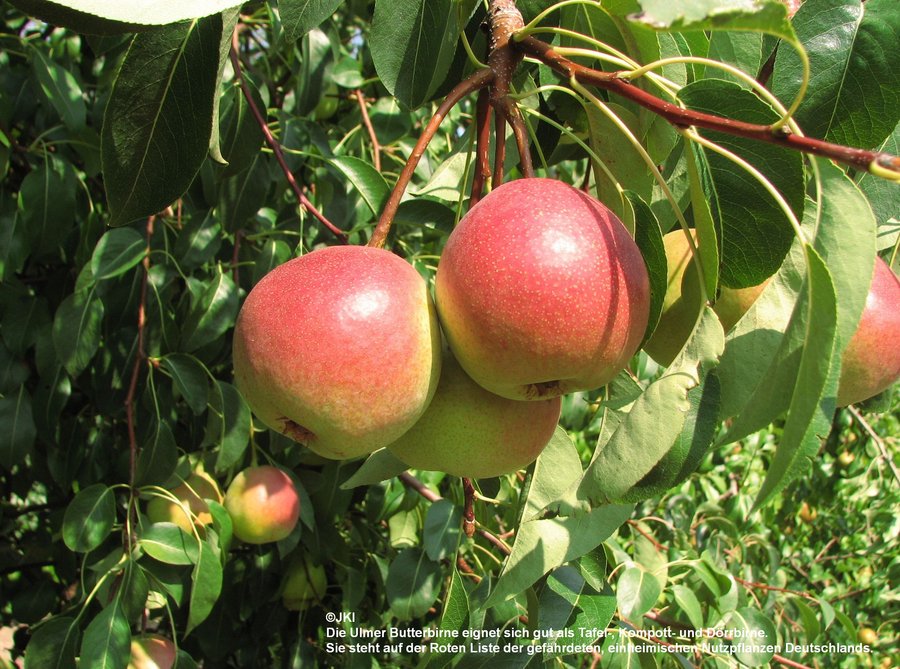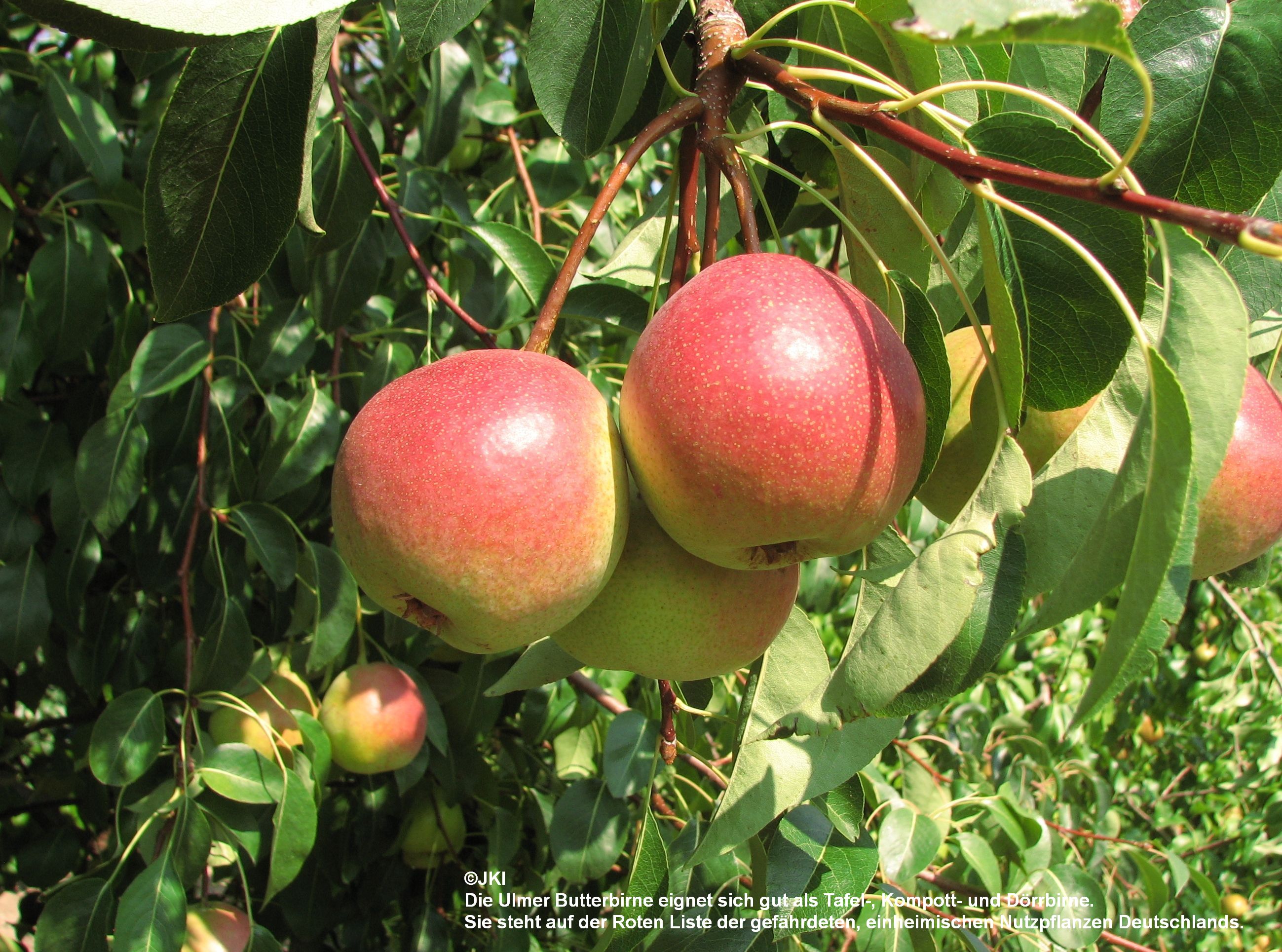Beetles, wild bees and above all hoverflies swarm around the white blossoms and provide the pollination. For our nose, however, the scent is sometimes a bit unpleasant: some people perceive a slightly fishy smell. We prefer to enjoy the beautiful contrast created by the dark red anthers against the bright white flowers.
There are about 28 species worldwide. In Europe, however, the best known are the cultivated pear Pyrus communis, which is important for fruit production, and the wild pear Pyrus pyraster, which belongs to the rare tree species.
The number of different varieties is estimated at about 5000 worldwide. Old varieties of pears can be found especially in old orchards. Nevertheless, 98 varieties are on the Red List of Endangered Local Crop, e.g. the Ulmer Butterbirne shown in the photo. Its taste is sweet and slightly spicy, making it particularly suitable for drying. The Deutsche Genbank Obst (German Genebank for Fruit Crops), which is working to safeguard the genetic diversity of indigenous fruit varieties, is one of the institutions ensuring its conservation.
Table pear or cooked pear?
The various small green pear varieties that turn yellow only late in life are known as cooked pears. Due to their firmness and spicy to slightly sweet taste, they are only suitable for consumption when cooked or baked. They lack the sweetness and juiciness of table pears.
Many of these old pear varieties are rare today, but it is worth rediscovering them! For example as a delicious compote, cake or hearty in the North German speciality "pears, beans and bacon". Perhaps you will discover the Wine-Bergamot Pear, the Griese Bern or other cooked pear varieties.
Further information:
Red list of pears in the PGRDEU
https://www.deutsche-genbank-obst.de/site/index


